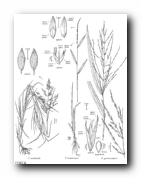
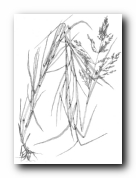
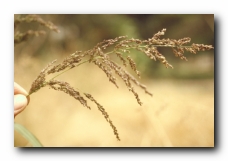

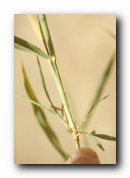
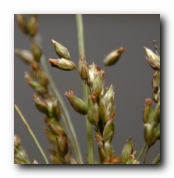
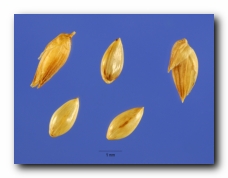
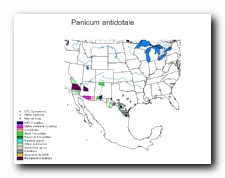
40" Rows:
Broadcast:
0.8 pound pure live seed per acre
2.0 pounds pure live seed per acre
Sandy:
Loam:
Clay:
Moderate
High
High
Special Notes:
| Origin: | Introduced | |
| Use: | Perennial, warm season, introduced grass that provides good grazing for wildlife and livestock. | |
| Image: |








|
|
| Plant Description: | ||
| General | Characteristics of Blue Panicum | |
| Life Span | Perennial | |
| Growth Form | tall, erect to spreading, simple | |
| Management: | ||
| Seeding Rate 40" Rows: Broadcast: |
0.8 pound pure live seed per acre 2.0 pounds pure live seed per acre |
|
| Planting Date | March-May | |
| Planting Depth | 0.25 inch | |
| pH requirement | 6.0 to 8.0 | |
| Rainfall requirement | 15 to 24 inches | |
| Soil texture Sandy: Loam: Clay: |
Moderate High High |
|
| Cold Tolerance: | Low | |
| General | Provides good grazing for wildlife and livestock. | |
| ID Features: | This 48-to 54-inch tall bunchgrass has coarse stems growing from a dense crown of thick, short, bulbous rhizomes. The lower part of the stem has large nodes and internodes with branches coming from the nodes. Leaves are abundant, 7 to 12 inches long and flat with a heavy midrib on the lower side. Terminal panicles are long, loose, open and usually erect, but slightly drooping at maturity. The spikelets are greenish-yellow, very slick and shiny in appearance and are borne on the tip end of rather long seed branches. | |
Special Notes: |
||
Regional Adaptation |
||||||||||||||||||
Variety |
Coast Saline Prairie |
Coast Prairie |
East Texas Timberlands |
Claypan Area |
Blackland Prairie |
East Cross Timbers |
West Cross Timbers |
Grand Prairie |
North Central Prairies |
Central Basin |
Edwards Plateau |
Northern Rio Grande Plain |
Western Rio Grande Plain |
Central Rio Grande Plain |
Lower Rio Grande Valley |
Rolling Plains |
High Plains |
Trans-Pecos |
| Panicgrass | X |
X |
X |
X |
X |
X |
X |
X |
X |
X |
||||||||